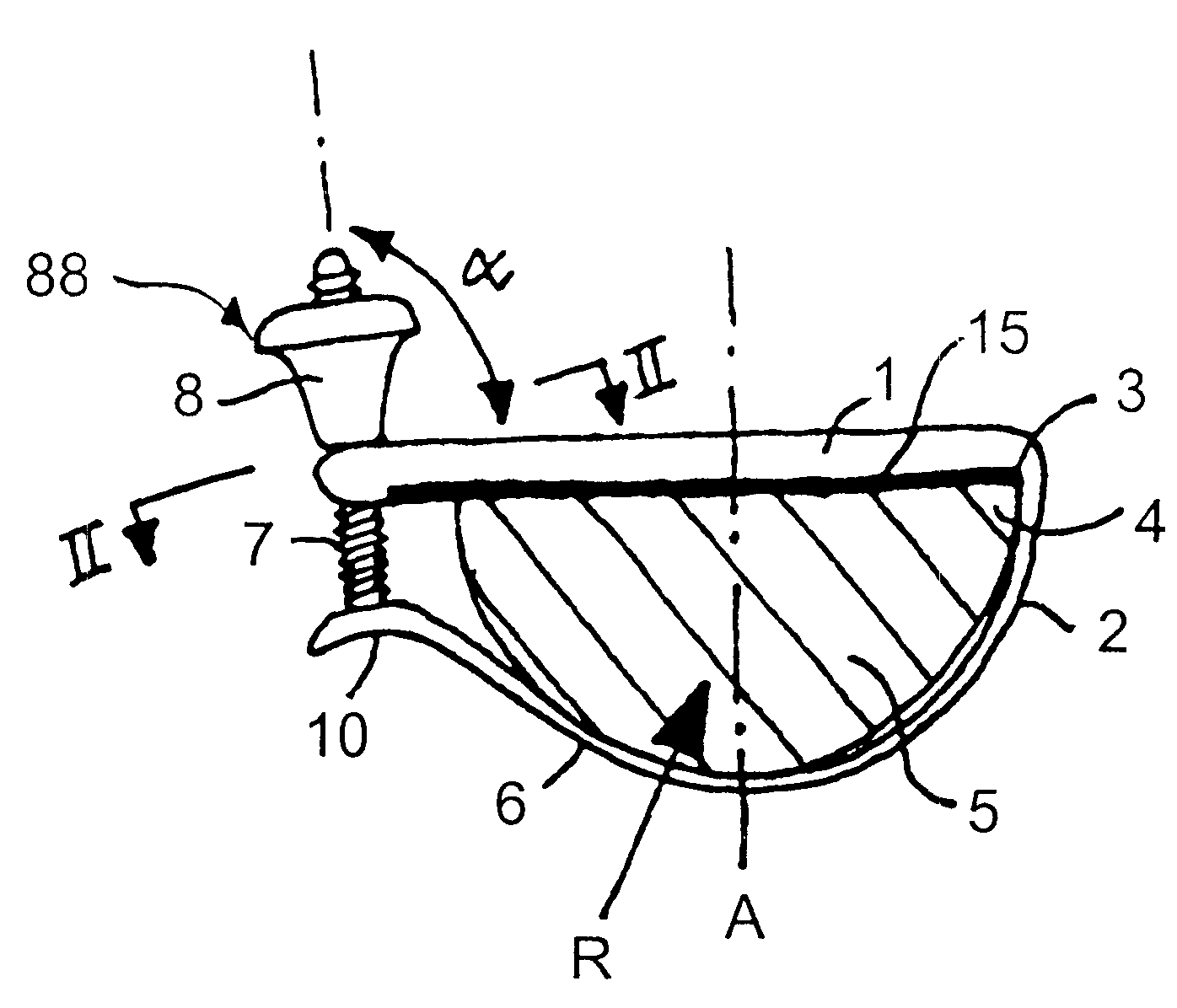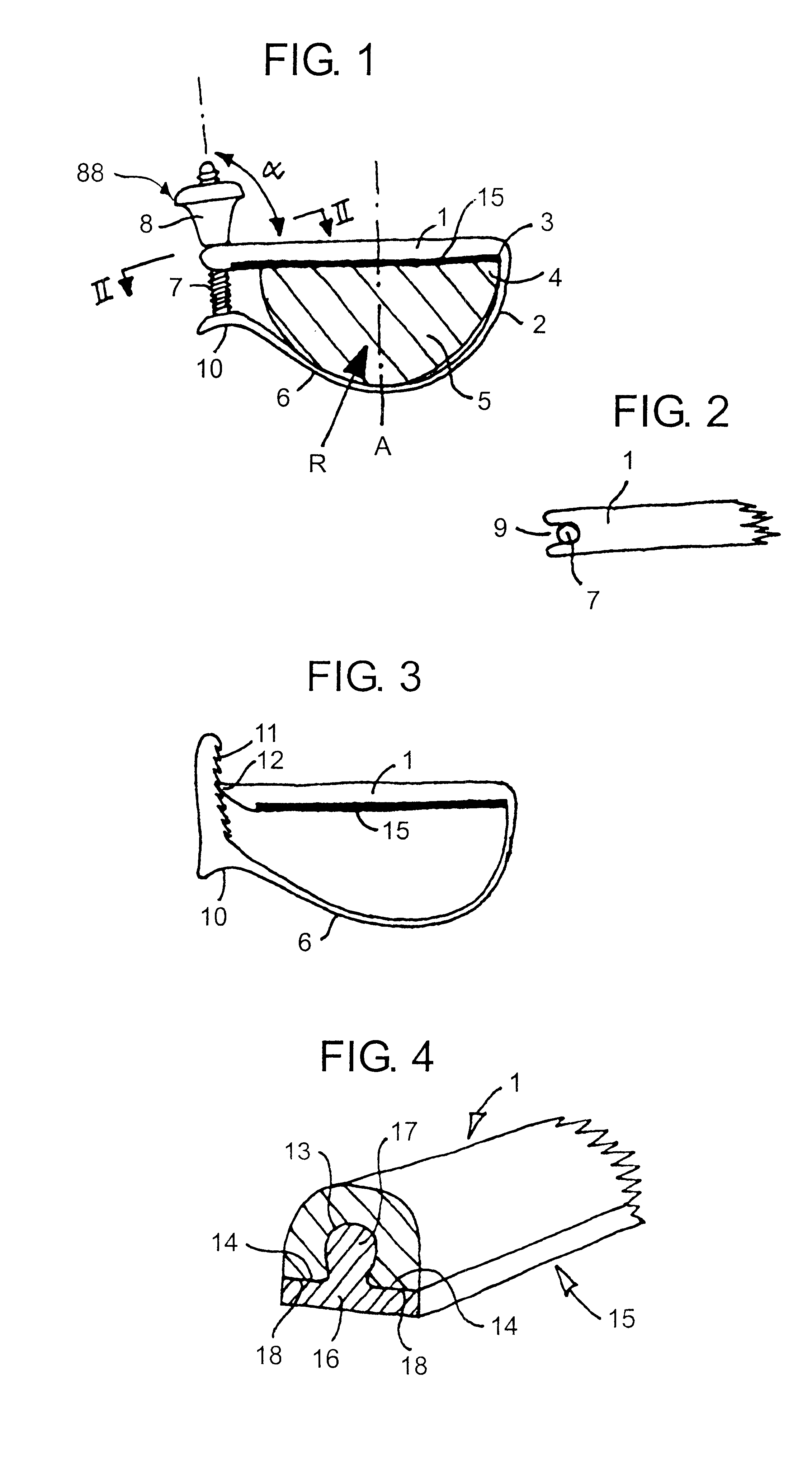Capotasto
a technology of capotasto and capotasto, which is applied in the field of capotasto, can solve the problems of impaired tuning of instruments, unsatisfactory capos with respect to one or more of the above requirements,
- Summary
- Abstract
- Description
- Claims
- Application Information
AI Technical Summary
Benefits of technology
Problems solved by technology
Method used
Image
Examples
Embodiment Construction
Further in scope of applicability of the present invention will become apparent from the detailed description given hereinafter. However, it should be understood that the detailed description and specific examples, while indicating preferred embodiments of the invention, are given by way of illustration only, since various changes and modifications within the spirit and scope of the invention will become apparent to those skilled in the art from this detailed description.
Shown in FIG. 1 is a rigid bar 1 which carries at one end a strap part 2 which extends generally at 90 degrees from said bar-end to form an inner corner 3 which receives a corresponding corner 4 on the neck 5 of the instrument, namely the side-edge corner of the fingerboard of said instrument (on the discant string side). It will be seen that the strap part 2 extends free from the undersurface of the neck, in the region that follows from the neck corner 4 down to the lower part of the neck 5.
The strap part 2 constit...
PUM
 Login to View More
Login to View More Abstract
Description
Claims
Application Information
 Login to View More
Login to View More - R&D
- Intellectual Property
- Life Sciences
- Materials
- Tech Scout
- Unparalleled Data Quality
- Higher Quality Content
- 60% Fewer Hallucinations
Browse by: Latest US Patents, China's latest patents, Technical Efficacy Thesaurus, Application Domain, Technology Topic, Popular Technical Reports.
© 2025 PatSnap. All rights reserved.Legal|Privacy policy|Modern Slavery Act Transparency Statement|Sitemap|About US| Contact US: help@patsnap.com


